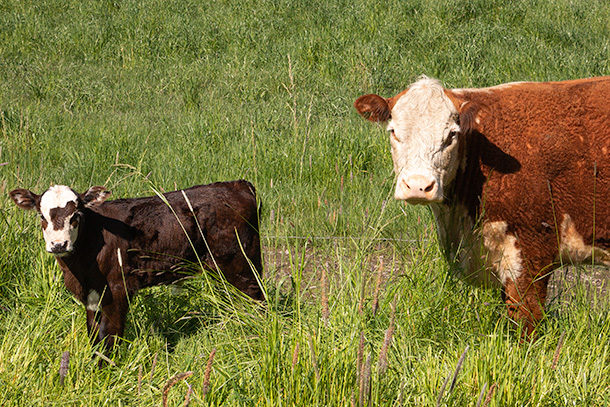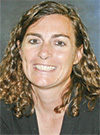Drought is no stranger to most cow-calf producers, so most have a plan for culling decisions related to about 20% of the cow herd. When drought threatens the grazing resources for the other 80%, difficult decisions have to be made. The first question that must be answered is, “Should I feed them or sell them?” This article explores some feeding options producers may have, but cost of production and opportunity costs will need to be carefully evaluated for each one.
Annual forages
For those with irrigated cropland, annual forages may be a means of providing grazing when perennial forages are limited. Planting spring cool-season annuals such as oats, rye, triticale or mixtures containing brassicas can stretch the grazing season and delay liquidation or confinement for a time. Producers might also consider “forage chains” in which the spring-planted cool-season annual is followed by a warm-season annual for grazing, haying or chopping as silage, followed by another cool-season crop for late-fall or following-spring grazing. The cost of seed, fertilizer and water need to be evaluated against other feeding options. Additionally, with current commodity markets, the opportunity cost of planting forages versus planting grain commodities must be carefully considered.
Feeding supplemental feed on pasture to stretch grass
Supplementing protein on grass will not reduce grass intake. In fact, it will likely increase grass intake, especially when grass quality is low. However, mixing a wet, high-quality feed like wet distillers grains with a low-quality roughage such as ground crop residue can replace some grazed forage and help meet the nutrient needs of the pairs. Research has suggested this forage replacement is most likely to be 0.5 pounds of forage dry matter for every 1 pound of a mixture of 30:70 wet distillers and wheat straw on a dry matter basis. This means of drought mitigation is something that needs to be planned and implemented to stretch pasture and is not meant to be used as a means of retaining cattle on a pasture that already needs grazing deferment, as this will not prevent overgrazing.
Early weaning
Early weaning (at less than 180 days old) can be a useful drought-mitigation tool. This removes the calf, who is likely eating 1.5% of birthweight on a dry matter basis in forage from the pasture, and it also removes the demands of lactation from the cow and may reduce her intake by 20%. Calves that are early weaned need a source of rumen-undegradable protein, such as distillers grains, to replace what they were receiving from milk, or they will likely not gain more than 1 to 1.5 pounds per day. Additionally, they need highly digestible feed that will not slow passage rate through the rumen and reduce intake; the quality of hay used is therefore very important. Producers who want to early wean calves may find it advantageous to feed the calves to a more traditional market weight but need to carefully evaluate the cost of gain against the value of that gain, particularly with today’s high commodity prices. The cow may then graze the pasture longer without the demands of lactation and the calf’s forage intake, or the cow may be maintained in confinement, which can be done with byproducts and residues.
Confinement feeding production cows
Limit-feeding nutrient-dense diets to cows in confinement has been shown to be successful. When limit-feeding a diet based on low-quality forage and distillers grains, the efficiency of the early weaned calf versus feeding lactating cows was similar. Early weaning, however, does allow the calves to be fed a diet that is better suited to their needs, which can allow for increased gains. Recent research suggests the most economical return is to feed calves a creep ration through a creep gate while allowing them to nurse the limit-fed cow. Those who can mix a separate ration for the calf, similar to that which would be fed to an early weaned calf, can get increased gains and profit. For some producers, though, creep rations may not be feasible. Calves of limit-fed cows that are not fed a creep ration will have limited access to feed and thus lower gains. The lower feed costs may not make up for the lower gains, resulting in lower profitability at normal weaning time. However, due to lower gains, these calves will experience some compensatory gain; thus, retaining the calves for a growing period can result in improved profitability.
While there are options for feeding cattle when grass is limited, producers need to carefully evaluate the cost of feeding the cattle against the value of the cow-calf pairs. ![]()
PHOTO: Photo by Lynn Jaynes.
Mary Drewnoski is a beef systems specialist at the University of Nebraska – Lincoln Extension.
-
Karla H. Wilke
- Cow-Calf Systems and Stocker Management
- University of Nebraska – Lincoln
- Email Karla H. Wilke











